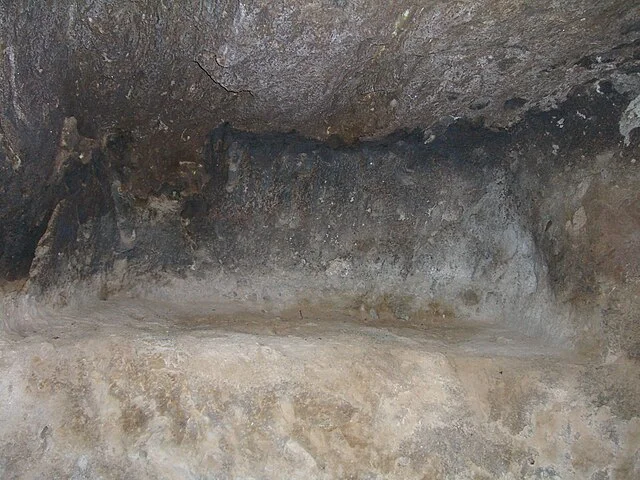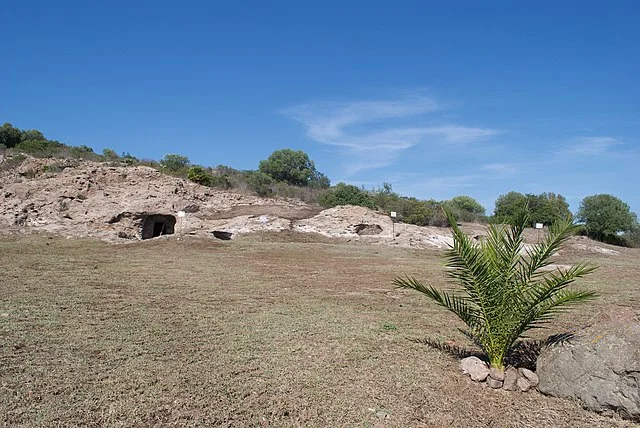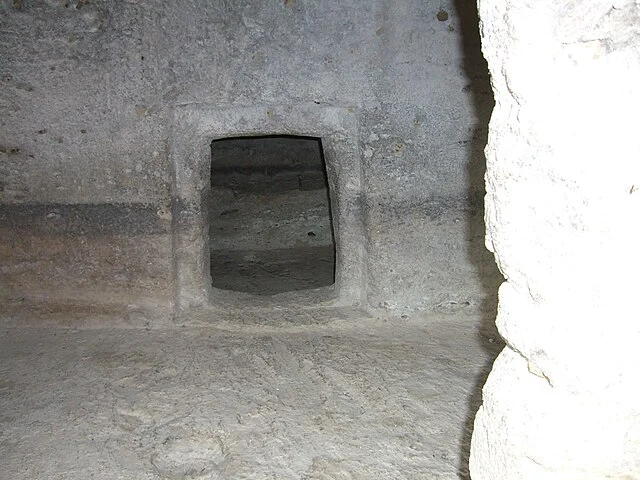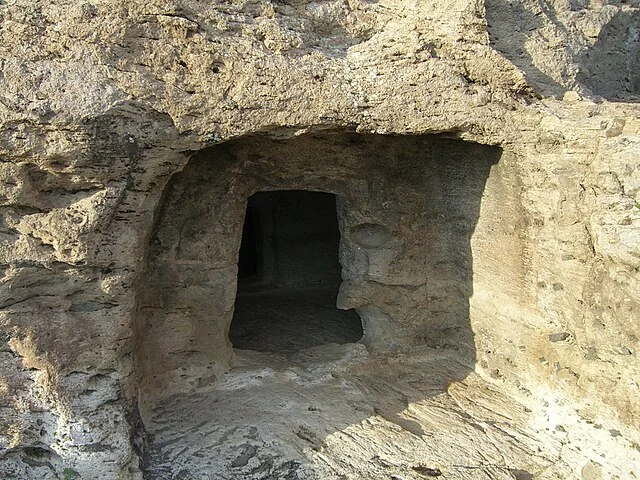The Necropolis of Is Loccis-Santus is an important archaeological site in Sardinia, Italy. It dates back to the early Bronze Age, around the 3rd millennium BC. This site contains evidence of an ancient burial ground and offers insights into the funerary practices of Sardinia’s prehistoric cultures.
Get your dose of History via Email
Discovery and Excavation

Archaeologists first identified the Necropolis of Is Loccis-Santus in the 20th century. Systematic excavations revealed a complex of rock-cut tombs, similar to those found in other parts of the Mediterranean. The tombs were used for multiple burials, often reflecting a communal approach to burial customs during the early Bronze Age.
Tomb Architecture

The tombs at Is Loccis-Santus are generally small and cut into limestone. Each tomb has a rectangular plan, with an entrance leading into a main chamber. Inside, archaeologists found skeletal remains along with grave goods, such as pottery and personal ornaments. These artifacts provide valuable information on the social status and beliefs of the people who used the necropolis.
Funerary Practices

The burials show a clear connection to the broader Mediterranean cultural sphere. The use of rock-cut tombs and the presence of grave goods align with contemporary practices in other regions. These finds suggest that the people of Sardinia were influenced by external cultures while maintaining their own traditions. The grave goods indicate that the dead were buried with objects considered important in the afterlife.
Significance in Sardinian Prehistory
The Necropolis of Is Loccis-Santus holds significant value for understanding Sardinia’s prehistory. The site provides a glimpse into the island’s early social organization and connections with other Mediterranean communities. Additionally, the presence of similar necropolises throughout Sardinia suggests that communal burial was widespread.
Ongoing Research
Research at Is Loccis-Santus continues as archaeologists use modern techniques to analyze the site. Advances in technology, such as DNA analysis, allow researchers to gain deeper insights into the population and their burial practices. Ongoing studies will further illuminate the role of the necropolis in Sardinia’s early history.
Conclusion
The Necropolis of Is Loccis-Santus is a crucial archaeological site that helps us understand the funerary practices and social structures of Sardinia during the early Bronze Age. Through the study of its tombs and artifacts, researchers can explore the island’s connections to the wider Mediterranean world while appreciating its unique cultural heritage.
Source:

